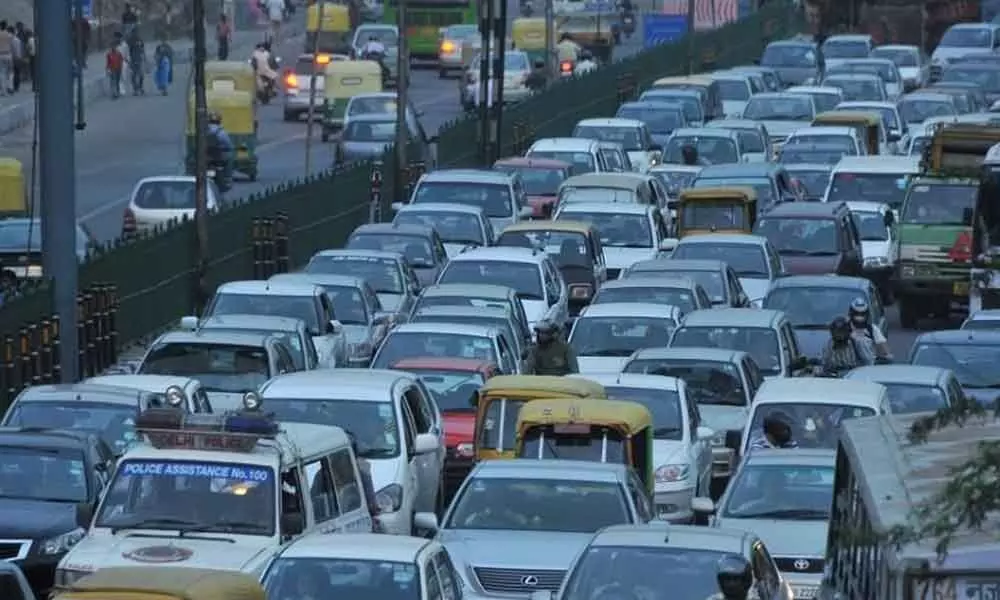Live
- DEO suspends teacher accused of sexual assault
- PM ‘cursing’ Congress out of despair: Maharashtra Cong Chief
- Applications are invited for Junior Colleges Scheme District Scheduled Castes Development Officer Ramlal
- A nomination was filed on the second day for the Nagar Kurnool parliamentary seat
- SP Gaikwad inspected the Telangana Amarnath Saleswaram Jatara yatra arrangements
- Rahul Gandhi's decision to contest from Wayanad shows 'lack of confidence': BJP President Nadda
- IPL 2024: Delhi bowlers will go after all of SRH’s top-order batters, says head coach Ricky Ponting
- At Amroha rally, PM Modi sends out ‘meaningful’ message for Muslims and Hindus
- Tripura records highest 79.83 pc voter turnout in Northeast
- The government has to clear the confusion
Just In
Why vehicle subscriptions are a win-win approach


Why vehicle subscriptions are a win-win approach
I recently came across a poster advertisement on Twitter. It said: 'Maruti Suzuki Subscribe.' The first thing that struck me was: If I subscribe, how am I owning and not renting?
I recently came across a poster advertisement on Twitter. It said: 'Maruti Suzuki Subscribe.' The first thing that struck me was: If I subscribe, how am I owning and not renting?
Delving into the details, I found it did mean owning a car and not renting one. It is an innovative way to own a vehicle.
It is perfect for someone like me who is sceptical about owning a personal vehicle for daily use as I am scared about driving on Delhi roads, but might do so occasionally. It is also perfect for people who are reluctant to own a car immediately, people who might change cities, people who shifted to public transport or are looking for a shift from personal to public transport and so on.
A win-win approach
The usual chain of events for owning a vehicle involves compulsory interaction with multiple stakeholders right from purchasing, registration, taxation, insurance, usage, maintenance throughout the vehicle's lifetime, de-registration and scrappage.
Ownership without having to worry about any of these and a single-window transaction through an original equipment manufacturer (OEM) makes it a hassle-free approach for the user.
Whether it is for the undecided first-time user, or the users' part of the cyclic (reselling-purchase) car-consumer-market, such an ownership model will indeed increase the flexibility of options.
A quick calculation showed that 'ownership rent' enlisted on the manufacturer's website for 25 variants of four-wheelers for 24 months ranged from Rs 3.8-8.4 lakh for models priced between Rs 5.7 lakh and Rs 12.6 lakh.
This is considering that the depreciation value of 30-50 per cent on the same models for 2-3 years is Rs 3.4-7.6 lakh, that is quite close to the rental value of ownership.
Additionally, 24x7 on-road assistance, with no extra cost other than rental, makes it a win-win approach. Contrarily, other existing rental options in the Indian market are expensive for a similar period.
Changing consumer market
Consumer attractiveness drives a change in market and mobility behaviour in cities. Lately, innovative marketing approaches have become synonymous to 'flexible-vehicle-ownership' in the global market.
'Zoomcar' is another rent-based subscription model that has gained immense popularity in Indian cities, where the idea is on shifting from car-owning to car-experiencing.
Shared mobility
Over the past few years, the concept of shared mobility has gained huge popularity in Indian cities, including app-based mobility services. Delhi alone has about two lakh app-based vehicles approximately.
A recent Deloitte study shows that with flexibility in mobility options, 51 per cent of millennials have re-considered the need to own a car while 44 per cent of Gen-X were sceptical about owning a car today.
Subscription models is a vast shared mobility segment. It is expected to grow by a compound annual growth rate of 65 per cent at $9.15 billion from 2020-2024.
The segment provides the perfect opportunity for introducing a wider range of flexible ownership-models in order to prevent long-term commitment to a vehicle.
This is a move forward for driving the vehicle restraint narrative, the very idea about lesser on-road vehicles, moving or still.
It will drastically impact the growth of piled up vehicles, control the plying of older vehicles, ease scrapping end-of-life vehicles, keep a check on the unregulated market of older vehicles and hence regulate emissions from transport vehicles.
Minimising a long ordeal
The study Towards effective scrappage policy and infrastructure by Delhi-based Centre for Science and Environment highlights that old vehicles are an integral part of India's vehicle market.
However, the quantification of volume remains a challenge. The Central Pollution Control Board estimated about nine million end-of-life vehicles to be on the road in the country in 2016. This number is estimated to increase to 22 million by 2025. This is almost equal to Delhi's population today.
With limited land resources, our cities are already burdened with a lot of old and abandoned vehicles on the road, a usual sight around the lanes of Delhi's residential areas. These vehicles don't just pollute but encroach expensive land and act as heat trapping machines. Another lacuna is that centralised vehicle registration data maintains a database for every new registration but not vehicles de-registered or due for de-registration. This is owing to a lot of factors including the time-consuming process itself.
However, the challenge is far beyond policy. It is about implementation with the lack of a database, the volume of vehicles, the shift of addresses, multiple ownership that increased multi-fold with time, etc. Additionally, the presence of informal scrapping centres makes it tricky.
( Courtesy: Down to Earth)

© 2024 Hyderabad Media House Limited/The Hans India. All rights reserved. Powered by hocalwire.com






